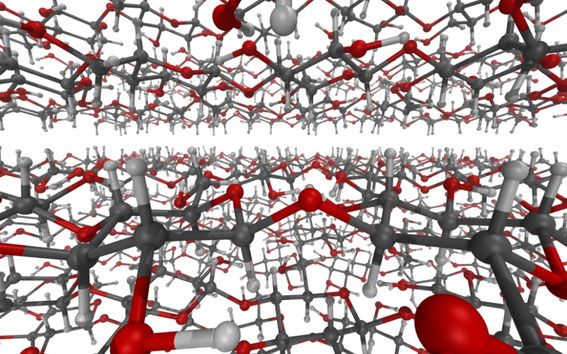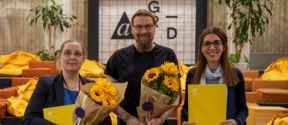Atomic-level understanding of materials facilitates product development

Aalto University, Kemira, Vaisala, Canatu, Elastopoli and Damicon Kraa are participating in the Molecular Modelling in Industrial Research and Development (MM-IRD) project. The purpose of the project is to carry out research and use molecular modelling in product and innovation development.
Molecular modelling is an area of chemistry in which researchers use computational methods to determine what happens in chemical phenomena at the atomic level.
‘At Aalto, we create a model that represents the phenomenon to be studied. A model can tell us what will happen when a sensor material reacts with a gas molecule, for example. Visual models help companies see what actually happens at the atomic level,’ Assistant Professor Antti Karttunen says.
Modelling can be used in two ways.
‘Modelling helps us explain what is taking place in an experimental observation. It can also be used to predict what will happen in laboratory experiments.’
Molecular modelling saves both time and money, and it is a safe research method. The model allows product developers to test dozens or hundreds of different materials and then select the best and most promising for experimental work.
If the pharmaceutical industry is excluded, molecular modelling has had a very small role in Finnish product development. In the rest of the world, molecular modelling is an important part of product development in the chemical and technology industries. With a systematic and long-term approach, Finnish industrial companies could use molecular modelling to boost their product development processes. Significant new business opportunities could also emerge.
Canatu is involved in the project to develop components that will maximise the electrical conductivity of carbon nanobud networks in all environments.
‘Carbon nanobuds have numerous applications in a wide range of sectors. Their ultimate electrical conductivity is useful in heating element applications, which Canatu develops for the automotive industry. They ensure, among other things, that advanced driver assistance systems work in all weather conditions,’ CTO Ilkka Varjos says.
Elastopoli Oy has been developing its patented biocomposite technology since 2007.
‘Our aim is to use molecular modelling to develop a next-generation biocomposite that is ecological, customizable and easy to process,’ CEO Markku Nikkilä says.
Kemira hopes that the project will support its product development. ‘Our goal is to model how various product features will affect the functionality of products in their end-use applications. We believe that we will be able to use modelling to shorten the product development time of mixtures, solutions and dispersions,’ says Annaleena Kokko, Manager R&D from Kemira.
Vaisala develops measurement products for demanding weather, environmental and industrial applications.
‘We are constantly developing new measurement technologies to provide our customers with reliable and accurate measurement data, even in demanding environments. Molecular modelling provides us with the opportunity to gain a profound understanding of the phenomena behind sensor responses. As a result, molecular modelling opens the way for new inventions,’ says Liisa Åström, Vice President, Products and Systems, Vaisala Industrial Measurements.
The MM-IRD project began in January and it is funded by Business Finland. At Aalto University, research is being carried out by the research groups of Antti Karttunen, Maria Sammalkorpi and Kari Laasonen.
Further information:
Assistant Professor Antti Karttunen
[email protected]
tel. +358 50 347 3475
- Published:
- Updated:
Read more news

Aalto Open Science Award ceremony brought together Aaltonians to discuss open science
Last week we gathered at A Grid to celebrate the awardees of the Aalto Open Science Award 2023 and discuss open science matters with the Aalto community.
Seed funding available to boost collaboration between Aalto, KU Leuven and University of Helsinki
Aalto University, KU Leuven and the University of Helsinki launch the 2nd exploratory seed funding call to explore research collaboration possibilities. The funding call is open until 10 September 2024.
Aalto ARTS Summer School explores the significance of water through the lens of art
The theme of School of Arts, Design and Architecture’s Summer School this year is water, and its significance is explored in a multidisciplinary way through the perspectives of art, film and digital.